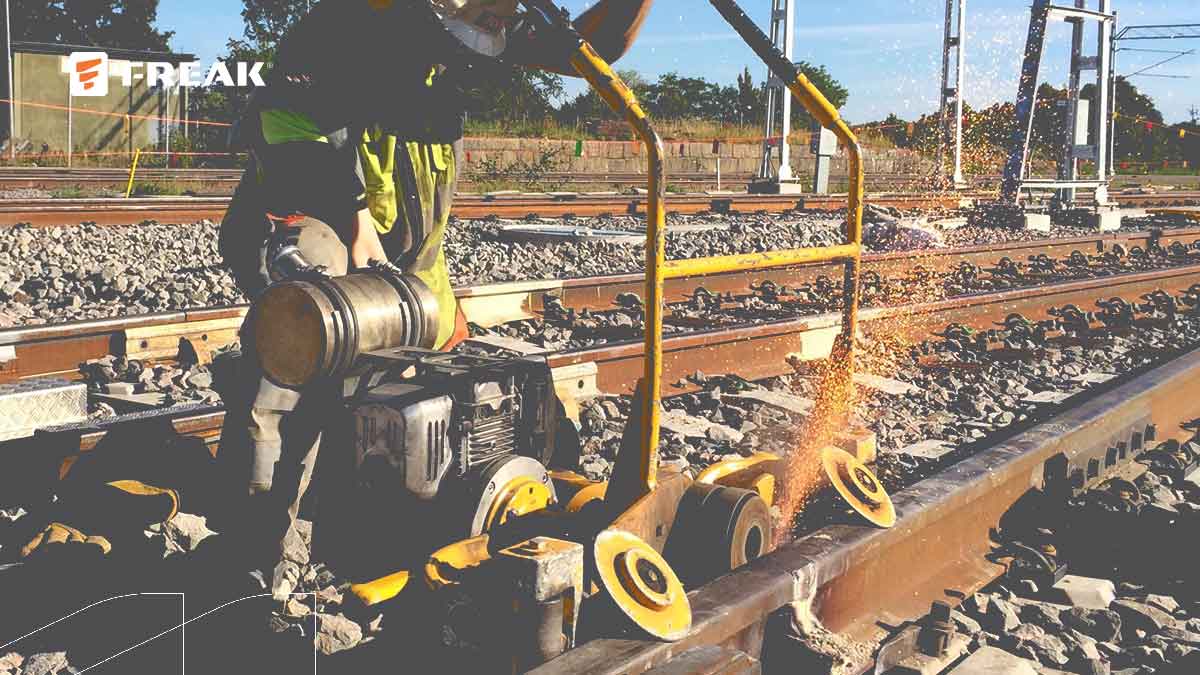What is Thermite Welding? A Comprehensive Guide! Thermite welding, also known as exothermic welding, is a specialized welding process that joins metal components using a chemical reaction rather than an external heat source. This unique welding technique has gained significant attention due to its applications in various industries and its ability to create strong, durable connections. In this article, we will delve into the fascinating world of thermite welding, exploring its process, benefits, applications, and more.
1. Introduction to Thermite Welding
Thermite welding is a fusion welding process that employs a chemical reaction between metal oxides and aluminum. This reaction generates an intense amount of heat, reaching temperatures as high as 2500°C (4532°F). The molten metal produced from this reaction fills the gap between the two metal components, effectively joining them without the need for an external heat source.
2. The Science Behind the Process
At the heart of thermite welding lies the thermite mixture, which consists of finely powdered metal oxides and aluminum. When ignited, aluminum reduces the metal oxides, releasing a substantial amount of energy in the form of heat. This exothermic reaction is highly controlled and provides the necessary heat to melt the metals being joined.
3. Components and Tools Required
To perform thermite welding, several components are essential, including the thermite mixture, a crucible to contain the reaction, a mold to shape the molten metal, and a flint igniter. Additionally, personal protective equipment such as heat-resistant gloves and goggles are crucial to ensure the safety of the welder.
4. Step-by-Step Welding Process
The thermite welding process involves several key steps:
- Preparation: Cleaning and positioning of the metal components to be welded.
- Mold Assembly: Setting up the mold to hold the molten metal post-reaction.
- Ignition: Using a flint igniter to initiate the thermite reaction.
- Reaction and Welding: Allowing the reaction to occur, resulting in the molten metal that fills the gap.
- Cooling and Solidification: Allowing the joint to cool and solidify, forming a strong bond.
5. Advantages of Thermite Welding
Thermite welding offers various advantages, including:
- High Strength: The resulting weld is often stronger than the base metals.
- Durability: Thermite-welded joints exhibit excellent resistance to wear and corrosion.
- No External Power Source: The process doesn’t require electricity or gas for welding.
- Minimal Equipment: The equipment required is relatively simple and portable.
6. Applications Across Industries

Thermite welding finds applications in diverse industries:
- Railways: Joining of rails in tracks.
- Construction: Welding pipelines, bridges, and structural components.
- Shipbuilding: Connecting metal plates for ship hulls.
- Automotive: Repairing heavy machinery and vehicles.
7. Comparison with Other Welding Techniques
Compared to conventional welding methods, thermite welding stands out due to its unique advantages. Unlike electric arc welding, it doesn’t rely on an electricity supply, making it suitable for remote areas. It also creates a more robust joint compared to gas welding, enhancing structural integrity.
8. Ensuring Safety During Thermite Welding
Safety is paramount during thermite welding. Proper protective gear, a controlled work environment, and adherence to safety guidelines are crucial to prevent accidents and injuries.
9. Challenges and Limitations
While thermite welding offers numerous benefits, it’s not without challenges. Controlling the intense reaction, achieving uniformity in large joints, and the need for skilled operators are some of the limitations.
10. Future Innovations in Thermite Welding
As technology advances, thermite welding techniques continue to evolve. Automation and computer-assisted systems are being integrated to enhance precision and control during the welding process.
11. Environmental Impact and Sustainability
Thermite welding produces fewer emissions compared to traditional welding methods, aligning with sustainability goals. The process generates minimal waste and consumes less energy.
12. Cost Considerations
The initial investment in thermite welding equipment might be higher, but the long-term benefits, including reduced maintenance and enhanced joint longevity, often outweigh the costs.
13. Maintenance of Thermite-Welded Joints
Thermite-welded joints require minimal maintenance due to their durability. Regular inspections can identify potential issues early, ensuring the continued integrity of the welded components.
14. Expert Tips for Successful Thermite Welding
- Precise Measurements: Accurate measurements of metal components and thermite mixture are crucial.
- Proper Mold Design: A well-designed mold ensures the molten metal fills the joint effectively.
- Skilled Operators: Training and experience are vital for successful thermite welding.
- Safety First: Adhering to safety protocols prevents accidents and injuries.
- Post-Welding Inspection: Regular checks post-welding ensure the quality of the joint.
15. Conclusion
Thermite welding, with its ingenious use of chemical reactions to create strong metal joints, has revolutionized various industries. Its ability to produce durable, reliable connections without the need for external power sources makes it a valuable welding technique. As technology continues to advance, thermite welding is likely to further enhance its precision, efficiency, and applications, contributing to a more sustainable and interconnected world.
FAQs (Frequently Asked Questions)
- Is thermite welding stronger than traditional welding?
Thermite welding often produces joints that are stronger than those achieved through traditional welding methods. - Can thermite welding be used for delicate materials?
Thermite welding’s high heat output makes it less suitable for delicate materials, as they can be damaged during the process. - What safety precautions should I take during thermite welding?
Ensure you wear heat-resistant gloves, goggles, and protective clothing. Work in a controlled environment, and follow safety guidelines closely. - Can thermite welding be automated?
Yes, advancements in technology are leading to the automation of thermite welding processes, improving precision and efficiency. - Where can I learn thermite welding?
You can find specialized training programs offered by welding institutes and online platforms that cover thermite welding techniques comprehensively.


